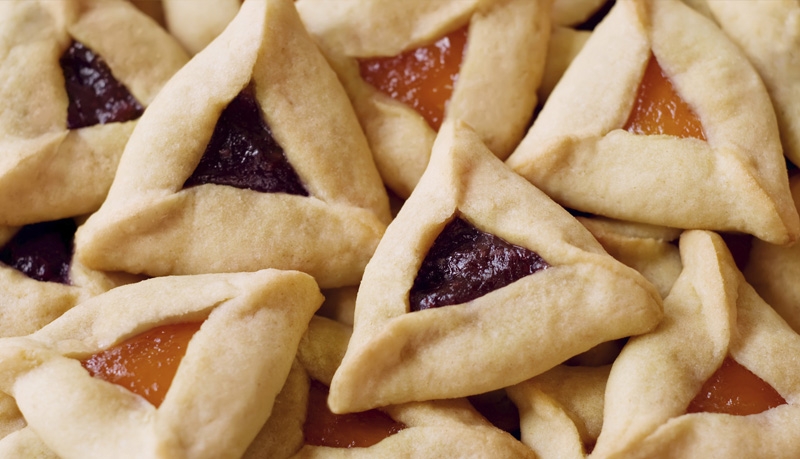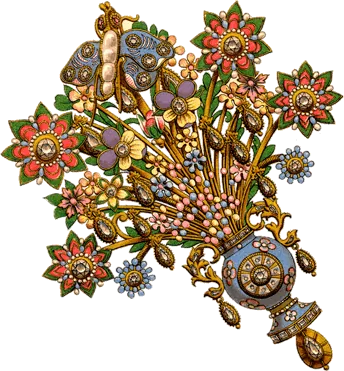Purim is the most fun-filled, action-packed day of the year. It commemorates the miraculous salvation of the Jewish people from the plots of the wicked Haman.
Purim is the most fun-filled, action-packed day of the year. It commemorates the miraculous salvation of the Jewish people from the plots of Haman, a vizier in the Persian Empire under King Ahasuerus (presumed to be Xerxes I), more than two millennia ago. The holiday of Purim and its customs come from the Book of Esther; and it is celebrated annually on the 14th of Adar.
History
In the 4th century BCE, the Jewish people were the subjects of the great Persian Empire, which ruled over a vast number of provinces that covered much of the ancient world.
The Book of Esther begins in Shushan or Susa (the modern day town of Shush in Iran). According to the Biblical account, King Ahasuerus held a six-month drinking feast to honor the army of Persia and Medea and for the civil servants and princes in the 127 provinces of his kingdom.
During the feast, King Ahasuerus became drunk, and ordered his wife to be executed for failing to comply with his command. With the Persian Empire left without a queen, King Ahasuerus determined to find a new queen by conducting a beauty pageant.
At the conclusion of his search, a Jewish girl named Hadassah, also known as Esther, was selected to represent Persia as its new queen. Having found favor in the eyes of the king, Esther ultimately decided to conceal her Jewish identity.
In the meantime, the eccentric and anti-Semitic Haman was appointed as the King’s vizier, or prime minister. When Esther’s cousin, Mordechai (who also held a government position) refused to bow to Haman, Haman became incensed and urged the king to issue a decree ordering the extermination of all Persian Jews; a policy that King Ahasuerus ultimately endorsed.
With the king’s compliance, the date chosen to execute the order was the 13th of Adar – a day on the Jewish calendar that was chosen by lottery (hence the name Purim, which means “lots”).
In response to the order, Mordecai, the leader of the Jewish people, put on sackcloth and ashes, all the while publicly weeping and lamenting, and he warned Esther that she would not be any safer in the palace than any other Jew in the Empire, and that if she continued to remain silent, salvation for the Jews would ultimately arrive from another place.
Esther heeded the warning, and asked her husband and his vizier (Haman) to accompany her for a feast, understanding that ultimately her appointment as Queen was by no means an accident; but in fact may have been Divinely orchestrated for such an emergency as this.
In the meantime, the rest of the Jewish people followed Mordecai’s directive to fast, repent, and pray to God for deliverance. At the feast, Esther revealed her Jewish identity, and the king ordered Haman to be hung, and appointed Mordecai as the new prime minister in his stead.
Immediately following, a new decree was issued, granting the Jewish people of Persia the right to defend themselves. Thus, on the 13th of Adar, the Jews defended themselves and killed many of their enemies. And on the 14th of Adar, they celebrated and feasted.
Customs of Purim
In the 9th chapter of the Book of Esther, it is recorded that Mordecai enacted obligations upon the Jewish people that are followed year after year, and continue to be followed up unto the present day.
Esther 9:20-24 says,
Mordechai recorded these events and sent letters to all the Jews who were in all the provinces of King Ahasuerus, the near ones and the distant ones, [charging them] to observe annually the fourteenth day of the month of Adar and its fifteenth day, as the days on which the Jews gained relief from their enemies, and the month which had been turned about for them from one of sorrow to gladness, and from mourning to festival; to observe them as days of feasting and gladness, and sending delicacies to one another, and gifts to the poor. The Jews undertook [to continue] that which they had begun, just as Mordechai had prescribed them. For Haman son of Hammedatha the Agagite, enemy of all the Jews, had plotted to annihilate the Jews and had cast a pur (that is, the lot) to terrify and to annihilate them.
From this passage, we derive our customs and observances for the feast of Purim:
Reading the Megillah – First, it is important to note that verse 20 mentions that “Mordechai recorded these events and sent letters to all the Jews…”
From this we understand that Mordecai wrote the Book of Esther (The Megillah) exactly as it appears in its present Biblical text. At the first Purim, the Jews living in the provinces of Persia opened Mordecai’s letter, and read the Megillah. Thus, it is a custom to read the Megillah in the Synagogue on the evening and morning of Purim.
Feasting and Gladness – Verse 22 mentions ‘Days of feasting and gladness’. Thus, eating and drinking and merry-making was instituted on Purim because the miracles that occurred through feasting: the royal feast that led to the death of Vashti; the feast of Esther’s coronation; and Esther’s two feasts that led to Haman’s downfall.
Sending Delicacies to Friends – Verse 22 goes on to mention ‘Sending delicacies to one another’. Since it says “one to another” in the singular form, the Sages say that the obligation is for each person to send a gift of food to at least one other person.
Giving Gifts to the Poor – Finally, the last item in verse 22, and perhaps the most important one, states, ‘and gifts to the poor’. This is understood to be separate from ‘Sending delicacies to one another’; and means that the custom is to actually give monetary gifts to poor people. Because the original passage mentions ‘gifts’ and ‘the poor’ in its plural form, it is understood that gifts should be given to at least two individuals who are less fortunate.
How to Celebrate
1. Hear the Megillah
Go to Sar Shalom or your local synagogue to hear the reading of the whole Megillah i.e. the Book of Esther. Pay attention to every word: When Haman’s name is mentioned, twirl your graggers (noisemakers) or stamp your feet to eradicate his evil name. Tell your kids that Purim is the only time when it’s a mitzvah to make noise!
Note: This year Sar Shalom is hosting an extravagant Costume party and Middle Eastern themed feast after the Megillah reading. Click Here for details.
2. Give to the Needy
A major theme of Purim is unity. Haman tried to kill all the Jews, the wealthy and the poor a like. Thus on Purim, it is essential to celebrate in unity and to help support the less fortunate. During Purim day, try to give money or food to at least two needy people. If you can’t find any people in need, please be mindful that Sar Shalom has a community fund that goes to support the less fortunate in Israel and within the community. It would be perfectly acceptable to contribute to this fund. You can do so by sending online donations here: https://rabbiyeshua.com/donate. All donations received on Purim will go to support the needy.
3. Send Delicacies to Friends
On Purim day, send a package containing ready to eat food or beverages such as pastries, fruits, or beverages. Remember that the text said, “Sending delicacies to one another.’" Thus, it is preferable that the gifts be delivered via a third party. So, choose a messenger! Remember that this is a fun and impressionable moment for your kids, so be sure to choose an enthusiastic messenger.
4. Feast! (S’udat Purim)
As the book of Esther indicates, Purim is to be a time of feasting. During the course of Purim day, gather your family and friends, and celebrate with a festive Purim meal. Traditionally, the meal begins before sundown and lasts well into the evening. At this meal, meat and wine are normally served as an expression of joy.
The Fast of Esther
To commemorate the prayer and fasting that the Jewish people held during the Purim Story, we fast on the day before Purim. Typically, we break fast after the reading of the Megillah. It is important to note that this is a minor fast, so it’s only for those who are in good health; and it only lasts from sunrise to after sunset. We encourage everyone who is able to participate in the Fast of Esther. By doing so, we enter into solidarity and prayer for the Jewish people, just as Mordecai and Esther did over two millennia ago, as many of the same existential threats that seek Israel’s destruction continue to exist today.


